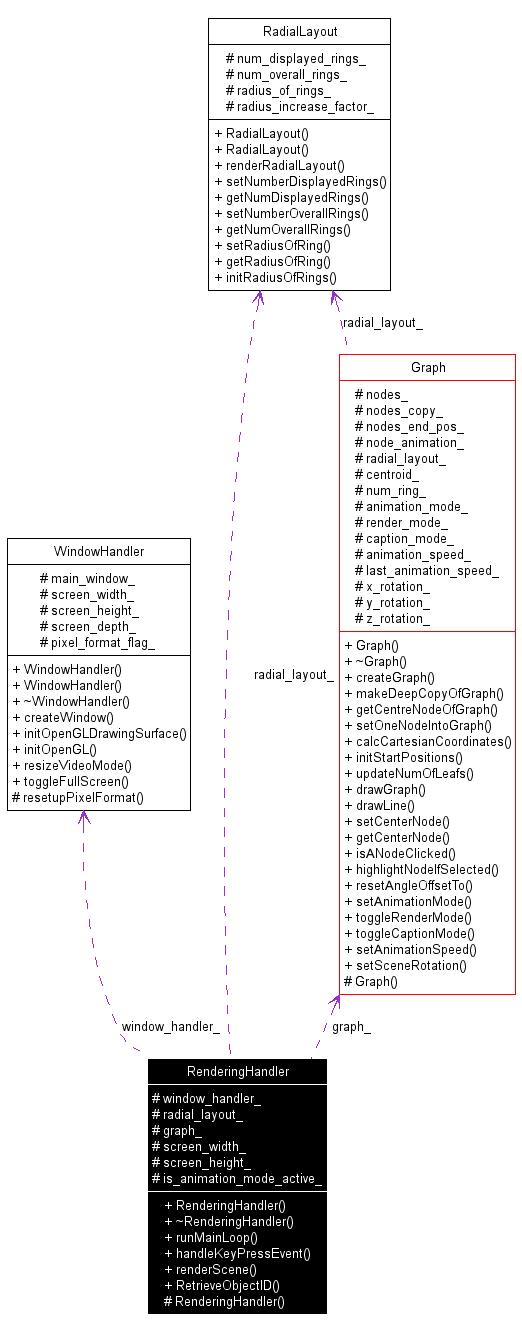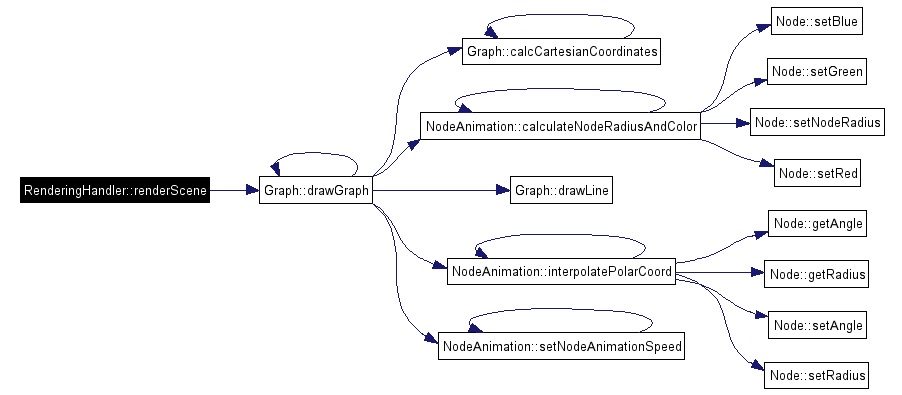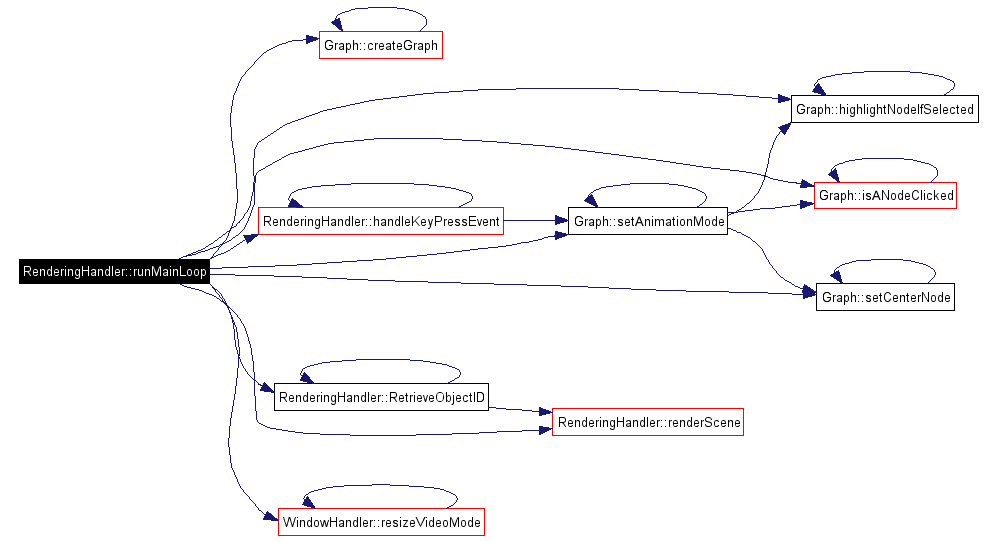
#include <RenderingHandler.h>
Collaboration diagram for RenderingHandler:

Public Member Functions | |
| RenderingHandler (WindowHandler *window_handler, RadialLayout *radial_layout, Graph *graph, GLuint screen_width, GLuint screen_height) | |
| ~RenderingHandler () | |
| void | runMainLoop () |
| void | handleKeyPressEvent (SDL_keysym *keysym) |
| void | renderScene () |
| int | RetrieveObjectID (int x, int y) |
Protected Member Functions | |
| RenderingHandler () | |
Protected Attributes | |
| WindowHandler * | window_handler_ |
| This holds the window handler. | |
| RadialLayout * | radial_layout_ |
| This holds the Radial Layout for it's drawing. | |
| Graph * | graph_ |
| The graph to render. | |
| GLuint | screen_width_ |
| The screen width. | |
| GLuint | screen_height_ |
| The screen height. | |
| bool | is_animation_mode_active_ |
| Sets the animation mode. | |
Definition at line 22 of file RenderingHandler.h.
|
|
The default constructor. Definition at line 43 of file RenderingHandler.h. References radial_layout_, and window_handler_.
|
|
||||||||||||||||||||||||
|
The constructor.
Definition at line 55 of file RenderingHandler.h. References graph_, is_animation_mode_active_, radial_layout_, screen_height_, screen_width_, and window_handler_.
|
|
|
The destructor. Definition at line 70 of file RenderingHandler.h.
|
|
|
This handles the key-press-events.
Definition at line 78 of file RenderingHandler.cpp. References graph_, handleKeyPressEvent(), is_animation_mode_active_, num_iterations_, Graph::setAnimationMode(), WindowHandler::toggleFullScreen(), Graph::toggleRenderMode(), and window_handler_. Referenced by handleKeyPressEvent(), and runMainLoop().
Here is the call graph for this function:  |
|
|
This renders the whole scene. Definition at line 112 of file RenderingHandler.cpp. References Graph::drawGraph(), graph_, num_iterations_, and radial_layout_. Referenced by RetrieveObjectID(), and runMainLoop().
Here is the call graph for this function:  |
|
||||||||||||
|
Definition at line 153 of file RenderingHandler.cpp. References renderScene(), RetrieveObjectID(), screen_height_, and screen_width_. Referenced by RetrieveObjectID(), and runMainLoop().
Here is the call graph for this function:  |
|
|
This handles the main loop of the application. Definition at line 17 of file RenderingHandler.cpp. References clicked_object_id_, Graph::createGraph(), graph_, handleKeyPressEvent(), Graph::highlightNodeIfSelected(), is_animation_mode_active_, is_animation_running_, Graph::isANodeClicked(), motion_object_id_, num_iterations_, renderScene(), WindowHandler::resizeVideoMode(), RetrieveObjectID(), Graph::setAnimationMode(), Graph::setCenterNode(), and window_handler_.
Here is the call graph for this function:  |
|
|
The graph to render.
Definition at line 30 of file RenderingHandler.h. Referenced by handleKeyPressEvent(), RenderingHandler(), renderScene(), and runMainLoop(). |
|
|
Sets the animation mode.
Definition at line 36 of file RenderingHandler.h. Referenced by handleKeyPressEvent(), RenderingHandler(), and runMainLoop(). |
|
|
This holds the Radial Layout for it's drawing.
Definition at line 28 of file RenderingHandler.h. Referenced by RenderingHandler(), and renderScene(). |
|
|
The screen height.
Definition at line 34 of file RenderingHandler.h. Referenced by RenderingHandler(), and RetrieveObjectID(). |
|
|
The screen width.
Definition at line 32 of file RenderingHandler.h. Referenced by RenderingHandler(), and RetrieveObjectID(). |
|
|
This holds the window handler.
Definition at line 26 of file RenderingHandler.h. Referenced by handleKeyPressEvent(), RenderingHandler(), and runMainLoop(). |
 1.3.7
1.3.7